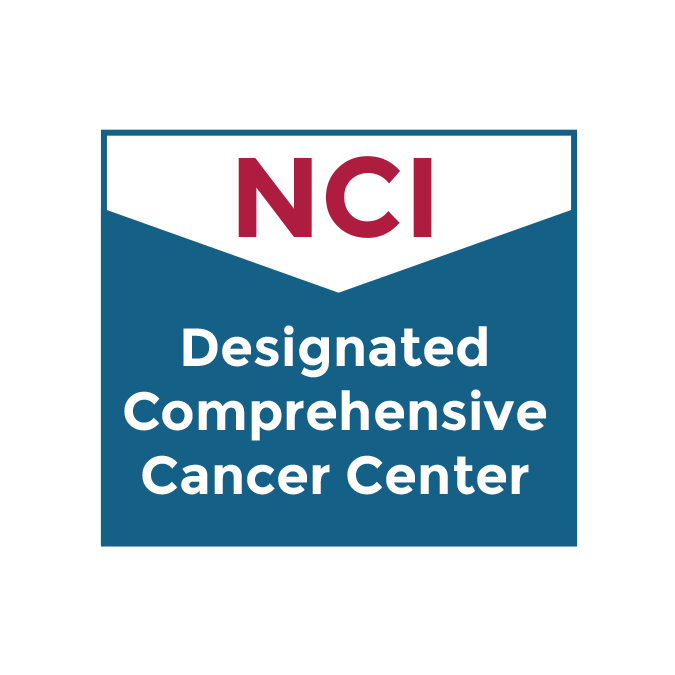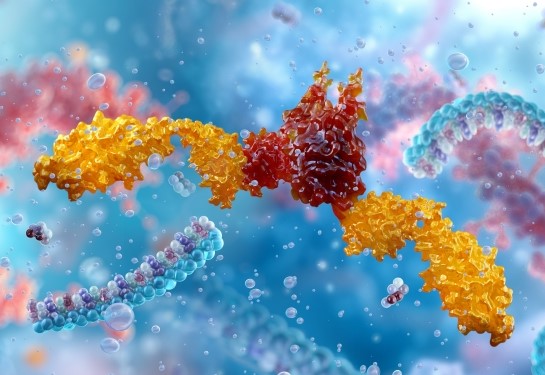You receive world-class care for all types of leukemia at the UC Davis Comprehensive Cancer Center. Our Leukemia, Lymphoma and Multiple Myeloma Program is the largest and most comprehensive center in the region. We are a National Cancer Institute-designated Comprehensive Cancer Center, a designation that speaks to our expert team and leading-edge treatments. Only 1% of cancer centers in the nation have this designation.
Leukemia
Access advanced treatments at our nationally recognized cancer center, where experts provide exceptional care with compassion.

Leukemia
Leukemia
Medically reviewed by Primo Lara, M.D. on Dec. 19, 2023.
You have access to the most advanced treatments in our nationally recognized cancer center. Our team provides expert care with a compassionate approach.
Expertise for Leukemia Care
Types of Leukemia
Leukemia is a term for several cancers affecting your blood and bone marrow. Bone marrow is spongy tissue inside your bones that makes blood cells.
The two most common types of leukemia include:
- Acute lymphoblastic leukemia (ALL)
- Acute myeloid leukemia (AML)
Less common types of leukemia include:
- Chronic lymphocytic leukemia (CLL)
- Chronic myelogenous leukemia (CML)
Leukemia types are based on the cells affected by the cancer and how quickly the cancer grows. Acute leukemias grow and spread more rapidly than chronic leukemias. ALL and AML are the two most common leukemias in children, and AML and CLL are the most common types in adults.
Leukemia Symptoms
Leukemia symptoms depend on the type of leukemia and where the leukemia cells collect. Other factors, such as your age and other health conditions, can also affect your symptoms.
If you notice these symptoms in yourself or your child, it doesn’t mean you have leukemia. However, it’s important to see your provider as soon as possible to determine the cause.
Common Symptoms
The most common signs and symptoms of leukemia include:
- Abdominal (belly) swelling or fullness
- Bleeding gums
- Bruising easily
- Fatigue or weakness
- Fevers or frequent illnesses
- Heavy menstrual periods
- Pain in your bones or joints
- Petechiae (tiny, red spots under your skin)
- Purpura (black, purple or red patches on your skin)
- Shortness of breath
- Weight loss without trying
Leukemia Causes and Risk Factors
Leukemia occurs when one of your bone marrow cells mutates (changes into an abnormal cell). This mutated cell divides and forms more mutated cells. Eventually, these abnormal cells outnumber your normal, healthy cells.
Experts do not yet know why these cell mutations occur. A combination of factors, including genetics and environment, may play a role.
Some factors that may increase your risk of leukemia include:
Benzene Exposure
A high level of benzene exposure can raise your risk of leukemia. People may be exposed to benzene through household chemicals, factories, vehicle exhaust, and tobacco smoke.
Blood Disorders
People with other types of blood disorders, including myelodysplastic syndrome, are more likely to develop leukemia.
Chemotherapy
If you have had chemotherapy in the past, your risk of leukemia is slightly higher. However, chemotherapy is a lifesaving treatment for many types of cancer.
Genetic Conditions
There is a higher risk of ALL and AML in people with Bloom syndrome, Down syndrome, Fanconi anemia and Li-Fraumeni syndrome.
Infections
Being infected with the Epstein-Barr virus or T-cell leukemia virus may increase your risk of developing ALL.
Diagnosis and Testing for Leukemia
Our team provides a thorough workup to diagnose or rule out leukemia. We listen to your concerns and perform a physical exam. In some cases, we may order blood tests and a bone marrow biopsy.
UC Davis Comprehensive Cancer Center offers the latest diagnostic tests including molecular genetic studies, which identify genes and proteins in leukemia cells. With this information, we can tailor your treatment for the best possible outcome.
Leukemia Treatments at UC Davis Health
At UC Davis Comprehensive Cancer Center, our experts have decades of experience treating all types of leukemia. You have access to the most advanced treatments available, including the latest clinical trials.
You receive care from multiple specialists who work together to find the best therapies for your unique needs. We personalize your treatment to your genetics, age and lifestyle. We support your physical and emotional health at every step.
Your treatment options may include:
Chemotherapy
Our Division of Hematology and Oncology and Division of Malignant Hematology/Cellular Therapy and Transplantation offer the latest and most effective chemotherapy medications for every leukemia type. Our specialists use their knowledge and experience to create a medication regimen that will work best for you.
Immunotherapy
Immunotherapy is a breakthrough in cancer treatment that teaches your immune system to attack leukemia cells. Our specialists use advanced genetic testing to personalize your immunotherapy medication for maximum effectiveness.
Radiation Therapy
Experts in our Department of Radiation Oncology helped pioneer radiation therapy techniques that have changed cancer outcomes for the better. We use advanced treatments that target cancer cells while minimizing effects on healthy tissue.
Stem Cell Transplant
Our Stem Cell Transplant Program, which is part of the Division of Malignant Hematology/Cellular Therapy and Transplantation, is among the most experienced and respected in the region. We provide a complete range of transplant options to treat acute and chronic leukemias.
Targeted Therapy
Targeted therapy stops the growth of only leukemia cells rather than all fast-growing cells. Our skilled cancer team offers a variety of targeted therapies that we personalize for you, including the newest medications in clinical trials.
Watchful Waiting
If you have chronic (slow-growing) leukemia, you may be able to delay treatment. Our team will answer your questions and closely monitor you for symptoms. We’re ready to help if and when you decide to start treatment.
“Leukemia” National Library of Medicine, https://www.ncbi.nlm.nih.gov/books/NBK560490/
Types of leukemia
AMLIs one of the most common types in adults
On average, people are
68Years old when first diagnosed with AML
Source: American Cancer Society: Key Statistics for Acute Myeloid Leukemia (AML)
Request an Appointment
Our cancer specialists provide thorough evaluations and personalized treatment plans. Learn more about how to make an appointment at UC Davis Comprehensive Cancer Center.
Patients
New Patient Referral Office
916-734-5959
UC Davis Health Referring Physicians
For providers in UC Davis Medical Group or our Cancer Care Network
Physician Referral Center
916-734-5959
External Referring Physicians
For providers who are external clinicians
Referral Office
800-770-9261

Ranked among the nation’s best hospitals
A U.S. News & World Report best hospital in cardiology, heart & vascular surgery, diabetes & endocrinology, ENT, geriatrics, neurology & neurosurgery, and pulmonology & lung surgery.

Ranked among the nation’s best children’s hospitals
U.S. News & World Report ranked UC Davis Children’s Hospital among the best in pediatric nephrology, orthopedics*, and pulmonology & lung surgery. (*Together with Shriners Children’s Northern California)

Ranked Sacramento’s #1 hospital
Ranked Sacramento’s #1 hospital by U.S. News, and high-performing in aortic valve surgery, back surgery (spinal fusion), COPD, colon cancer surgery, diabetes, gynecological cancer surgery, heart arrhythmia, heart failure, kidney failure, leukemia, lymphoma & myeloma, lung cancer surgery, pacemaker implantation, pneumonia, prostate cancer surgery, stroke, TAVR, cancer, orthopedics, gastroenterology & GI surgery, and urology.

The nation’s highest nursing honor
UC Davis Medical Center has received Magnet® recognition, the nation’s highest honor for nursing excellence.

World-class cancer care
One of ~59 U.S. cancer centers designated “comprehensive” by the National Cancer Institute.

A leader in health care equality
For the 13th consecutive year, UC Davis Medical Center has been recognized as an LGBTQ+ Healthcare Equality Leader by the educational arm of America’s largest civil rights organization.
Latest Cancer News
-
NOVEMBER 21, 2025
Virtual toy drive brings holiday cheer to hospitalized kids
-
NOVEMBER 17, 2025
UC Davis drug trial brings hope to bladder cancer patients
-
OCTOBER 27, 2025
Lung Cancer Screening Day set for Sat., Nov. 8.
-
OCTOBER 15, 2025
Young cancer survivors face higher risk of chronic illnesses


